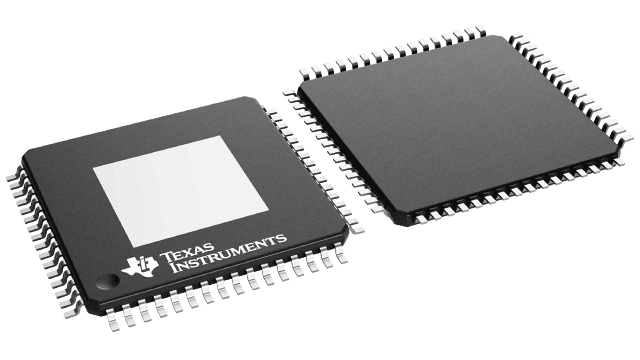Texas Instruments
TAS5412TPHDRQ1
TAS5412TPHDRQ1
Couldn't load pickup availability
TAS5412TPHDRQ1 Texas Instruments - Yeehing Electronics
Automotive, 28-W, 2-ch, 6- to 24-V analog SE input Class-D audio amplifier w/ I2C diag & load dump
Pricing (USD)
| Quantity | Unit Price |
| 1 — 99 | 15.938 |
| 100 — 249 | 13.921 |
| 250 — 999 | 10.734 |
| 1,000 + | 6.72 |
The above prices are for reference only.
Specifications
| Manufacturer | Texas Instruments |
| Product Category | Audio Amplifiers |
| RoHS | Y |
| Series | TAS5412-Q1 |
| Product | Audio Amplifiers |
| Class | Class-D |
| Output Power | 150 W, 79 W |
| Mounting Style | SMD/SMT |
| Type | 2-Channel Stereo |
| Package / Case | HTQFP-64 |
| Audio - Load Impedance | 4 Ohms |
| THD plus Noise | 0.02 % |
| Supply Voltage - Max | 24 V |
| Supply Voltage - Min | 6 V |
| Minimum Operating Temperature | - 40 C |
| Maximum Operating Temperature | + 105 C |
| Qualification | AEC-Q100 |
| Packaging | Reel |
| Input Type | Analog |
| Output Current | 9.8 A, 14.8 A |
| Supply Type | Single |
| Brand | Texas Instruments |
| Gain | 12 dB, 20 dB, 26 dB, 32 dB |
| Number of Channels | 2 Channel |
| Development Kit | TAS5412Q1PHDEVM |
| Moisture Sensitive | Yes |
| Operating Supply Current | 125 mA |
| Pd - Power Dissipation | 1.9 W |
| Product Type | Audio Amplifiers |
| PSRR - Power Supply Rejection Ratio | 75 dB |
| Factory Pack Quantity | 1000 |
| Subcategory | Audio ICs |
| Unit Weight | 0.017506 oz |
For more information, please refer to datasheet
Documents
| TAS5412TPHDRQ1 Datasheet |
More Information
The device is a two-channel digital audio amplifier designed for use in automotive head units and external amplifiers. It provides two channels at 28 W into 4 Ω at 10% THD+N from 14.4 V or 46 W into 2 Ω at 10% THD+N. The digital PWM topology provides dramatic improvements in efficiency over traditional linear amplifier solutions. This reduces the power dissipated by the amplifier by a factor of ten under typical music playback conditions. The device incorporates a patented PWM design that provides excellent power-supply rejection in the harsh electrical environment common in automotive applications. Applications attain high efficiency without the need for complicated power supply schemes. The design allows synchronization of multiple devices.

